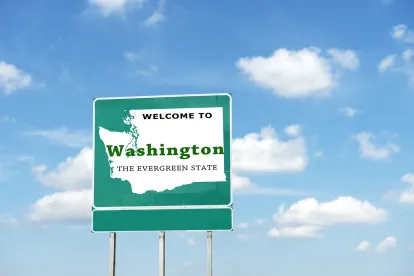Washington has adopted new laws that presume workers’ compensation coverage for “frontline employees,” creating reporting requirements, and provide additional protections for “high risk” workers designed to better prepare the state for the next pandemic. The new laws take effect immediately.
Workers’ Compensation Presumptions
SB 5115, the Health Emergency Labor Standards Act or HELSA, is one of the most expansive pandemic worker-protection laws in the country.
During a public health emergency regarding infectious or contagious disease, HELSA provides “frontline employees” who are exposed “through respiratory droplets or aerosols or contact with contaminated surfaces” with a rebuttable presumption of an “occupational disease” required for workers’ compensation coverage.
To rebut the presumption, employers must show by a preponderance of the evidence that the exposure occurred:
(1) From other employment or non-employment activities; or
(2) While the employee was working from home, on leave for the quarantine period prior to exposure, or both.
The definition of “frontline employees” includes a long list of workers who interact with the public:
- First responders
- Food processing/manufacturing/distribution, farm, and meat-packing workers
- Maintenance, janitorial, and food service workers at healthcare facilities
- Transit drivers/operators
- Child care workers
- Retail employees
- Hotel/motel/transient accommodation staff
- Restaurant employees
- Home care and home health aides
- Correctional officers and support staff
- Various educational employees
- Public library workers
In contrast, SB 5190 provides a stronger (but still rebuttable) presumption of workers’ compensation coverage for healthcare workers exposed to any disease causing a public health emergency. To overcome that presumption, an employer must provide clear and convincing evidence, a higher burden than a preponderance of the evidence under HELSA.
High-Risk Worker Protections
HELSA also codifies some protections of the High-Risk Worker Proclamation. During a public health emergency, no employer may discharge, permanently replace, or discriminate against an employee who is “high risk” for seeking accommodation regarding exposure or, if no accommodation is reasonable, utilizing all available leave options, such as unpaid leave and unemployment insurance.
The law defines a “high risk” employee as one whose:
- Age or an underlying health condition puts them at high risk of severe illness from the disease creating the public health emergency, as defined by the CDC; and
- Medical provider has recommended removal from the workforce.
Unlike the High-Risk Worker Proclamation, HELSA does not require employers to maintain health insurance during leave or to provide any advanced notice before changing granted accommodations.
Rapid Reporting Requirements
HELSA also has two rapid reporting requirements similar to what was already required by previous COVID-19 emergency measures.
Employers with more than 50 employees have 24 hours to inform the state that 10 or more employees at a worksite test positive for the disease creating a public health emergency.
All employers have one business day to notify workers at the location where a person tests positive, is diagnosed, ordered to isolate by a public health official, or dies of the disease. The notice must be written but may not identify the ill worker. Employers also must notify union representatives of “frontline employees.” Healthcare facilities need only inform employees of “known or suspected high-risk exposure.”
Nothing in HELSA or SB 5190 displaces employers’ obligations under other laws, so employers should seek the assistance of counsel to ensure overall compliance.




 />i
/>i

